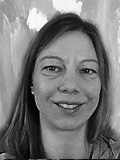ABOUT THE CONSORTIUM
The konsortium consists of the following institutions:
WP 2
Analytical methods
WP 3
Sources and distribution
WP 4
Fate and behavior
WP 0 Leadership and joint activities
Aalborg University
Leaders of the research group:
Professor Jes Vollertsen
He will be the center leader. His ability to lead MarinePlastic is based on a strong record of project management and leadership. He leads a research group of currently 12 people, of which half work solely on microplastics. He did, for example last year attracted external microplastics research projects worth in excess of 5 million DKK to his group. He has experience from the first large national study on the efficiency of Danish wastewater treatment plants to retain microplastics and studied treatment technologies to mitigate the issue. He is head of the section of Water and Environment at Aalborg University. He and his group of researchers focus on analytical methods to quantify microplastics in environmental systems and he commands a top-end analytical lab equipped with the most advanced equipment for this purpose. His research role in MarinePlastic is developing and refining analytical methods (WP 2) and applying them in the field (WP 3).
Associate Professor Asbjørn Haaning Nielsen
He studies environmental process engineering with focus on obtaining fundamental knowledge trough experimental studies. Main research areas are impacts on the environment of urban and highway stormwater runoff, microbial and chemical processes in urban water systems, and analytical methods to measure micropollutants and microplastics. He has published numerous papers and co-authored two text books and has a h-index of 15 (WOS). His main role in MarinePlastic is to develop novel methods to quantify nanoplastic, and apply these in the marine environment.
Postdoc Alvise Vianello
He worked from 2010 to 2016 at CNR-IDPA, environmental, forensic, and archaeological analysis. Since 2012 he focused his works on microplastic pollution. He participated in several monitoring surveys in the Northern Adriatic Sea (Mediterranean Sea), and in the Lagoon of Venice (Italy). Since 2016 he is working at Aalborg University on microplastic pollution, focusing on analytical methods development and analysis of environmental samples by FPA-µFTIR-Imaging and Py-GCMS.
His role in MarinePlastic includes method development and analysis, furthermore project coordination tasks.
Aarhus University
WP 1
Regulation and societal actions
Leader of the research group:
WP 2
Analytical methods
WP 3
Sources and distribution
WP 4
Fate and behavior
Senior Researcher Jakob Strand
Studies environmental biology and chemistry. His research has focused on sources, distribution and composition of macro- and microplastics in Danish waters and Greenland. He also develops improved methods for identifying and quantifying microplastics. He is involved in national MSFD monitoring of beach litter and microplastics as assigned by the Danish EPA and in establishing analytical methods for microplastic in e.g. drinking water for the Danish EPA. He began his work on marine plastic debris in 2013 and today supervises 2 Postdocs on microplastic research. He is currently involved in 8 projects on plastic debris and microplastic, e.g. two projects funded by VELUX/VILLUM. His main role in MarinePlastic is to study sources and distribution of microplastic and develop novel methods for quantification.
Louise Feld
She has a background working with hazardous materials and their degradation in natural environment, and their effects on the ecosystem. She has great experience with developing and controling the quality of methods and sampling. Furthermore she contibuted to analysing microplastic in Danish drinking water for the Miljøstyrelsen. She participated in several projects to investigate macro- and microplastic in the environment. Her role in MarinePlastic is primarily the identification of the sources of microplastic, and investigating the amount and distribution of microplastic in the different marine sections.
Technical University of Denmark
Leaders of the research group:
WP 1
Regulation and societal actions
WP 5
Ecological impacts
Senior Researcher Nanna B. Hartmann
She studies ecotoxicology and environmental fate and effects of microplastics. She has a longstanding involvement in OECD test guideline development and a thorough experience in investigating the fate of particles (including microplastics). She has extensive experience in working on the interface between science and regulation through previous and current employments. She is involved in national studies of microplastics for the Danish EPA, she provides expert advice to the European Commission’s Chief Scientific Advisors on policy development for micro- and nanoplastics, and is an invited speaker by the European Commission’s Joint Research Centre later this year. Her main role in MarinePlastic is to assess the risk of nano- and microplastics in the marine environment.
Associate Professor Steffen Foss Hansen
He studies regulatory engineering, where he holds a Doctor Technices degree. He researches how science and engineering can best be used in regulatory settings in situations pervaded by scientific uncertainty and complexity and risk analysis, regulation and governance of nanotechnologies and the applicability of decision-making tools under uncertainty. He has e.g. six publications in Nature Nanotechnology and 60 ISI publications. His h-index is 15 (WOS). He is associate editor of the journals NanoImpact and Chemical Processes and Materials and is actively involved in the expert advisory group on nanotechnology of the World Health Organization and he is a Member of the ECHA Nanomaterial Working Group representing the European Environment Bureau on Scientific and Technical issues. His role in MarinePlastic is to study regulation and social actions on plastic pollution.
Professor, Dr. scient, Ph.D Torkel Gissel Nielsen
He is specialized in experimental plankton ecology, regulation of structure and composition of pelagic food web. Impact of climate change, oil exploration and microplastics on food web composition and energy transfer. Field and experimental work in arctic, temperate and tropical ecosystems. Participation (often as cruise leader) in more than 50 multidisciplinary research cruises since 1987. The last 20 years he has on average received more than 1 mill DKK per year in external founding through projects he has coordinated or contributed significantly to. Supervision of master (60) and Ph.D. (15) students. He has published 180 ISI registered papers (H-index 40). His role in MarinePlastic is to study the risk of nano- and microplastics in the marine environment.
National Museum of Denmark
Leader of the research group:
WP 3
Sources and distribution
WP 4
Fate and behavior
Senior Research Scientist Yvonne Shashoua
She has more than 20 years’ experience of plastics formulation, manufacture and degradation mechanisms and focuses her research on investigating factors and rates for breakdown of polymers in real time and developing innovative strategies to control their lifetimes. She is a key partner studying the degradation of nanomaterials in the EU Horizon 2020 research project NANORESTART and comparing the performance and lifetimes of virgin, recycled and bio-polyethylene building materials in a project funded by Grundejernes Investeringsfond. She has more than 100 peer-reviewed articles and is a visiting lecturer at several universities and e.g. The Royal Danish Academy of Fine Arts. Her role in MarinePlastic is to investigate fate and behavior of microplastics in the marine environment.
Roskilde University
Leaders of the research group:
WP 1
Regulation and societal actions
WP 5
Ecological impacts
WP 0 Leadership and joint activities
Associate Professor Kristian Syberg
He works with environmental risk and environmental regulation. He has an interdisciplinary focus drawing upon natural and social scientific disciplines. He is currently PI from RUC on the first holistic plastic pollution project in Denmark (Plastfrit Roskilde Fjord funded by VELUX Foundation). He has published several scientific papers on plastic pollution covering environmental monitoring, ecological impact and regulation of plastic pollution. He has made a report on plastic pollution in Danish coastal waters for the Danish EPA. He collaborates with external partners such as the plastic industry and environmental NGOs, proving a strong platform for outreach activities and involvement with stakeholders. He is involved in the current negotiations on a Danish action plan for plastic hosted by the Danish EPA. His main role in MarinePlastic is to investigate drivers for societal change that can minimize plastic pollution and contribute to joint activities in terms of outreach and external communication.
Associate Professor Annemette Palmqvist
She has a background in ecotoxicology, zoophysiology and population ecology. Since 2005 she has developed and tested scientifically-based methods for extrapolation of effects of pollutants observed at the organismal level to population level with the purpose of improving the knowledge base for conducting risk assessments. In recent years, her research has focused primarily on the fate and effects of particulate pollution including both metal nanoparticles and microplastics, and among other projects she is currently involved in three projects on microplastics, which in addition to academic partners include industry-, consultancy-, regulatory- and NGO stakeholders. Her main role in MarinePlastic is to assess the risk of nano- and microplastics in the marine environment
Associate Professor Farhan Khan
He studies ecotoxicology and ecophysiology and works on the effects of toxicants and understanding their underlying mechanisms. His research on microplastics covers different aspects including field studies into environmental prevalence and laboratory studies on negative impacts and how such particulates affect the interactions between exogenous chemicals and organisms (i.e. ‘vector effect’). He has made the first reporting of microplastics within continental African freshwaters and one of the first descriptions of how microplastics can influence the uptake of metal pollutants. Currently he has an industry co-funded PhD investigating the impacts of microrubber. His main role in MarinePlastic is to assess the risk of nano- and microplastics in the marine environment
MarinePlastic - The Danish center for research in marine plastic pollution
The project is supported by
© Copyright. All Rights Reserved.












